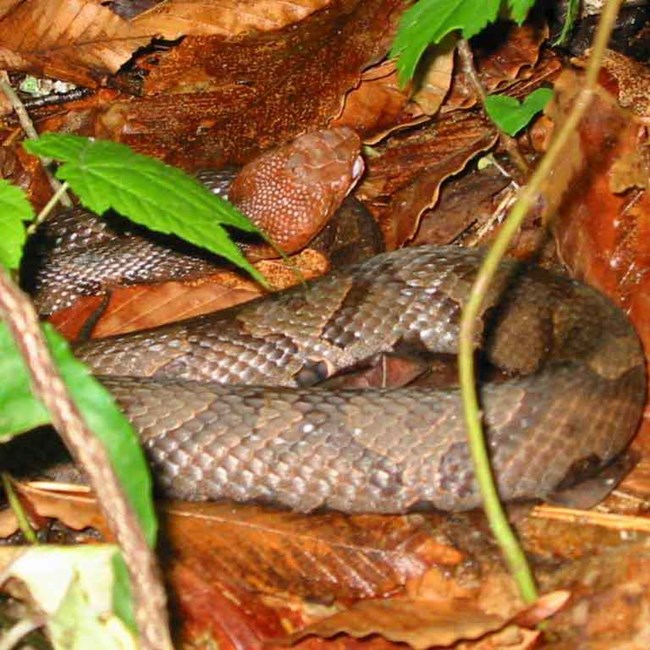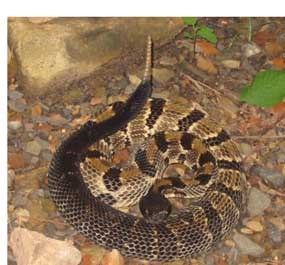
While there are many different types of snakes found at Bluestone National Scenic River, only two types are venomous; the Northern Copperhead and the Timber Rattlesnake. Although these snakes are not normally aggressive, they can bite if surprised or threatened. Copperheads and rattlesnakes are an essential part of the natural ecosystem and an important component in the natural food chain. Please remember that snakes are protected at Bluestone National Scenic River; it is illegal to harm them. Common TraitsThe copperhead and the rattlesnake share three characteristics that can quickly distinguish them from other non-venomous snakes. Northern Copperhead

Timber Rattlesnake:
How to avoid being bitten:
|
Last updated: March 2, 2023
